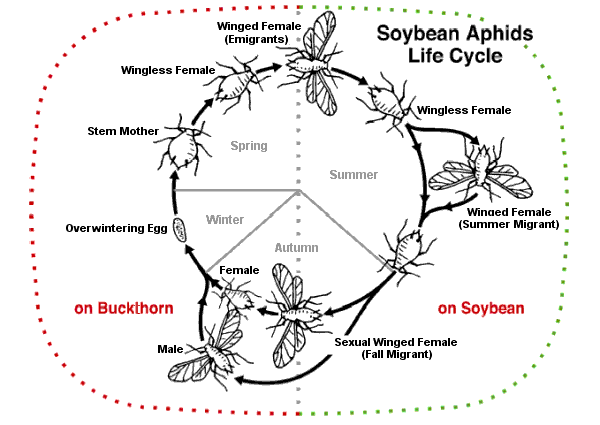|
Aphelinus Certus
''Aphelinus certus'' is a parasitoid wasp Parasitoid wasps are a large group of hymenopteran superfamilies, with all but the wood wasps ( Orussoidea) being in the wasp-waisted Apocrita. As parasitoids, they lay their eggs on or in the bodies of other arthropods, sooner or later cau ... native to Asia. It parasitizes the soybean aphid and other aphids. North American introduction ''A. certus'' has been found in North America since 2005, and was likely introduced along with or soon after the soybean aphid. ''A. certus'' is likely to parasitize both native and introduced aphids in North America as it has a relatively wide host-range. References Aphelinidae Insects described in 1963 {{Chalcidoidea-stub ... [...More Info...] [...Related Items...] OR: [Wikipedia] [Google] [Baidu] |
Parasitoid Wasp
Parasitoid wasps are a large group of hymenopteran superfamilies, with all but the wood wasps ( Orussoidea) being in the wasp-waisted Apocrita. As parasitoids, they lay their eggs on or in the bodies of other arthropods, sooner or later causing the death of these hosts. Different species specialise in hosts from different insect orders, most often Lepidoptera, though some select Coleoptera, beetles, Diptera, flies, or Hemiptera, bugs; the spider wasps (Pompilidae) exclusively attack spiders. Parasitoid wasp species differ in which host life-stage they attack: eggs, larvae, pupae, or adults. They mainly follow one of two major strategies within parasitism: either they are endoparasitic, developing inside the host, and koinobiont, allowing the host to continue to feed, develop, and moult; or they are ectoparasitic, developing outside the host, and idiobiont, paralysing the host immediately. Some endoparasitic wasps of the superfamily Ichneumonoidea have a mutualism (biology), ... [...More Info...] [...Related Items...] OR: [Wikipedia] [Google] [Baidu] |
Soybean Aphid
The soybean aphid (''Aphis glycines'') is an insect pest of soybean (''Glycine max'') that is exotic to North America. The soybean aphid is native to Asia. It has been described as a common pest of soybeans in China and as an occasional pest of soybeans in Indonesia, Japan, Korea, Malaysia, the Philippines, and Thailand. The soybean aphid was first documented in North America in Wisconsin in July 2000. Ragsdale ''et al.'' (2004) noted that the soybean aphid probably arrived in North America earlier than 2000, but remained undetected for a period of time. Venette and Ragsdale (2004) suggested that Japan probably served as the point of origin for the soybean aphid's North American invasion. By 2003, the soybean aphid had been documented in Delaware, Georgia, Illinois, Indiana, Iowa, Kansas, Kentucky, Michigan, Minnesota, Mississippi, Missouri, Nebraska, New York, North Dakota, Ohio, Pennsylvania, South Dakota, Virginia, West Virginia, and Wisconsin. Together, these states accounte ... [...More Info...] [...Related Items...] OR: [Wikipedia] [Google] [Baidu] |
Host Range
In biology and medicine, a host is a larger organism that harbours a smaller organism; whether a parasitic, a mutualistic, or a commensalist ''guest'' (symbiont). The guest is typically provided with nourishment and shelter. Examples include animals playing host to parasitic worms (e.g. nematodes), cells harbouring pathogenic (disease-causing) viruses, a bean plant hosting mutualistic (helpful) nitrogen-fixing bacteria. More specifically in botany, a host plant supplies food resources to micropredators, which have an evolutionarily stable relationship with their hosts similar to ectoparasitism. The host range is the collection of hosts that an organism can use as a partner. Symbiosis Symbiosis spans a wide variety of possible relationships between organisms, differing in their permanence and their effects on the two parties. If one of the partners in an association is much larger than the other, it is generally known as the host. In parasitism, the parasite benefit ... [...More Info...] [...Related Items...] OR: [Wikipedia] [Google] [Baidu] |
Aphelinidae
The Aphelinidae are a moderate-sized family of tiny parasitic wasps, with about 1100 described species in some 28 genera. These minute insects are challenging to study, as they deteriorate rapidly after death unless extreme care is taken (e.g., preservation in ethanol), making identification of most museum specimens difficult. The larvae of the majority are primary parasitoids on Hemiptera, though other hosts are attacked, and details of the life history can be variable (e.g., some attack eggs, some attack pupae, and others are hyperparasite A hyperparasite, also known as a metaparasite, is a parasite whose host, often an insect, is also a parasite, often specifically a parasitoid. Hyperparasites are found mainly among the wasp-waisted Apocrita within the Hymenoptera, and in two ot ...s). Males and females may have different hosts and different life historie They are found throughout the world in virtually all habitats, and are extremely important as biological control agen ... [...More Info...] [...Related Items...] OR: [Wikipedia] [Google] [Baidu] |
_(7686081848).jpg)

.jpg)